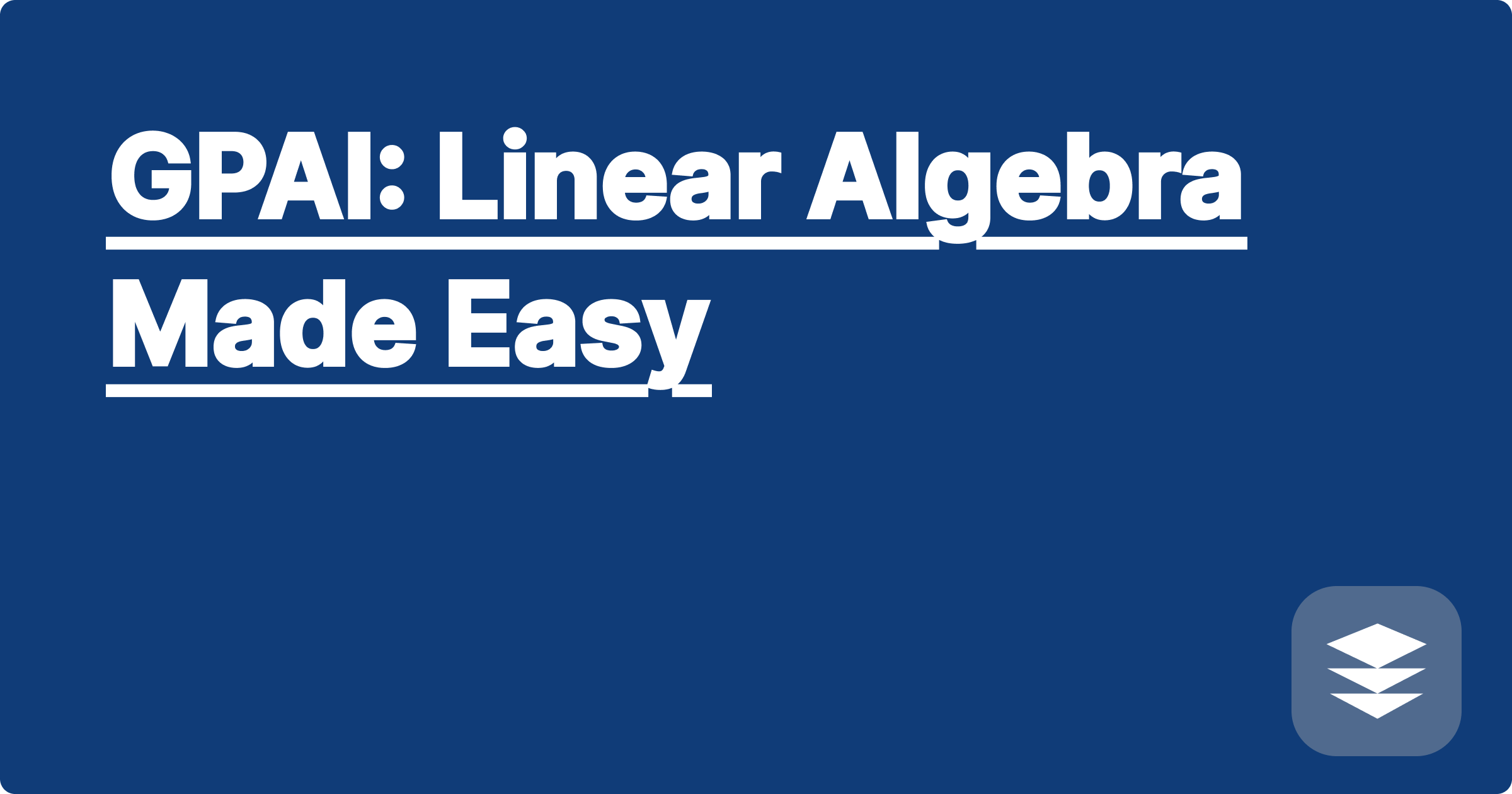
STEM fields often demand significant time and effort, particularly when grappling with complex subjects like linear algebra. Many students find themselves spending countless hours on homework, struggling to grasp intricate concepts and solve challenging problems. This can lead to frustration and detract from exploring other important academic pursuits. Artificial intelligence offers a powerful new approach to learning and problem-solving, providing tools that can significantly reduce the time spent on tedious tasks and enhance understanding of fundamental principles. AI can act as a personalized tutor, offering step-by-step guidance, generating practice problems, and even checking your work.
This shift towards AI-assisted learning is particularly relevant for today's STEM students and researchers. Mastering linear algebra is crucial for a wide range of disciplines, from computer science and engineering to physics and economics. AI tools can empower students to not only complete their homework more efficiently but also to develop a deeper understanding of the underlying mathematical concepts. By leveraging these tools effectively, students can free up valuable time for research, exploration, and other academic pursuits, ultimately leading to greater success in their chosen fields.
Linear algebra, a cornerstone of STEM education, deals with vector spaces, matrices, and linear transformations. These concepts are fundamental to a wide array of applications, including computer graphics, machine learning, data analysis, and quantum mechanics. However, many students find the subject challenging due to its abstract nature and the sheer volume of calculations involved. Tasks like matrix multiplication, finding eigenvalues and eigenvectors, and solving systems of linear equations can be time-consuming and error-prone, often leading to frustration and a sense of being overwhelmed. Furthermore, traditional learning methods may not always cater to individual learning styles, leaving some students struggling to grasp the core concepts. This difficulty can hinder progress in other STEM subjects that rely heavily on linear algebra, creating a significant bottleneck in their academic journey.
AI-powered tools like ChatGPT, Claude, and Wolfram Alpha offer a revolutionary approach to learning and problem-solving in linear algebra. These tools can provide step-by-step solutions to complex problems, generate practice exercises tailored to specific learning needs, and even explain underlying concepts in clear, concise language. For instance, if you're struggling with matrix inversion, you can simply input the matrix into Wolfram Alpha, and it will not only provide the inverse but also show the steps involved in the calculation. Similarly, ChatGPT and Claude can be used to generate practice problems on specific topics, such as finding the null space of a matrix or determining linear independence. These AI assistants can also provide explanations and clarify concepts that you might find confusing in textbooks or lectures.
Let's consider a practical example: finding the eigenvalues and eigenvectors of a matrix. First, define the matrix you're working with and input it into your chosen AI tool, such as Wolfram Alpha. Specify that you want to find the eigenvalues and eigenvectors. The AI will then process the input and present the solution. You'll typically see the eigenvalues listed, followed by their corresponding eigenvectors. Furthermore, some tools, like Wolfram Alpha, also offer the option to see the step-by-step calculation involved in arriving at the solution. This allows you to understand the underlying process, not just the final answer. You can then use this knowledge to solve similar problems on your own.
Consider the matrix A = [[2, 1], [1, 2]]. Inputting this matrix into Wolfram Alpha with the query "eigenvalues and eigenvectors of {{2, 1}, {1, 2}}" will yield the eigenvalues 3 and 1, with corresponding eigenvectors [1, 1] and [-1, 1] respectively. This demonstrates how quickly and accurately AI can solve complex linear algebra problems. Another example involves solving a system of linear equations. Suppose you have the equations 2x + y = 5 and x - y = 1. You can input these equations into ChatGPT or Claude and ask for the solution. The AI will then provide the values of x and y that satisfy both equations. These examples illustrate the practical power of AI in tackling common linear algebra problems.
Integrating AI tools into your learning workflow can significantly enhance your understanding and efficiency in linear algebra. Don't just rely on AI for answers; use it as a tool to understand the underlying concepts. Break down complex problems into smaller, manageable parts, and use AI to guide you through each step. Experiment with different AI tools to find the one that best suits your learning style. Use AI to generate practice problems and test your understanding. Don't be afraid to ask clarifying questions to the AI, just as you would with a human tutor. By actively engaging with these tools, you can transform your learning experience and achieve greater academic success.
To effectively integrate AI into your linear algebra studies, start by exploring the capabilities of different tools. Experiment with Wolfram Alpha for computational tasks, and utilize ChatGPT or Claude for conceptual understanding and practice problem generation. Don't hesitate to ask questions and challenge the AI's responses to deepen your understanding. Practice regularly with the AI as a supplement to your traditional learning materials. Most importantly, remember that AI is a tool to enhance your learning, not replace it. Active engagement with the material and critical thinking remain essential for true mastery of linear algebra.